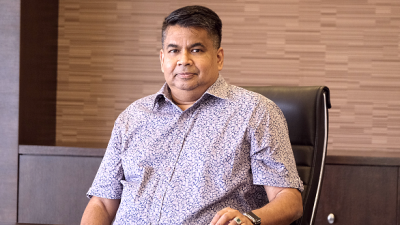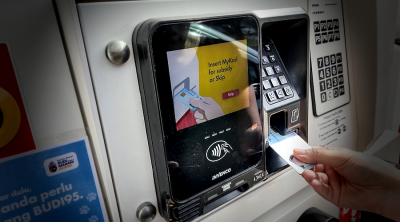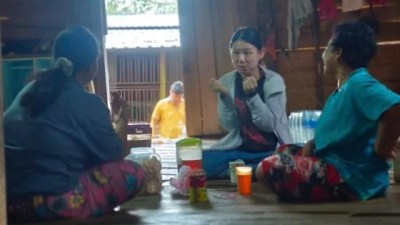
High-density areas such as transport infrastructure, places of worship, tourist attractions, stadiums, shopping centres, and commercial streets are prime targets for extremists due to large crowds, especially during events.
Over the past two months, global vehicle-ramming attacks (VRAs) on these venues have reignited discussions on public safety related to violent extremism and terrorism (VE&T).
In November, a driver rammed a car into a Zhuhai sports centre in China, killing 35.
Additionally, a vehicle attack at a German Christmas market in Magdeburg resulted in at least six deaths.
On New Year’s Day, a self-radicalised individual ploughed through crowds in New Orleans, leaving 15 dead and 30 injured.
In recent years, extremists have targeted unprotected civilian locations using methods like stabbing and VRAs due to significantly increased security at traditional VE&T targets such as airports (Farrell et al., 2011).
VE&T attacks are becoming less sophisticated, more unpredictable, and quickly planned, utilising accessible weapons like knives, firearms, and vehicles.
While terrorist organisations like Al-Qaeda and IS have historically endorsed vehicular attacks, recent perpetrators have emerged from diverse backgrounds in ideology, biography, and location, further complicating detection and prevention efforts.
Emulation and spread of VE&T tactics
Research shows that VE&T methods employed in one region can inspire similar attacks elsewhere, as extremists often adopt tactics from incidents in different locations, sparking concerns about copycat attacks (CISA, 2024).
For instance, VRAs have spread beyond the Israel-Palestine conflict to Western cities and recently to the Asia-Pacific region.
Miller and Hayward (2019) argue that terrorism patterns exhibit trend-like behaviour, such as the prevalence of skyjacking in the late 1960s and early 1970s, embassy takeovers in the 1970s, and the recent surge in school shootings across the United States (US).
Towers et al. (2015) suggest that extensive media coverage of recent VE&T incidents can influence extremists and trigger waves of imitation.
Public security and safety in Malaysia
Lessons can be drawn from China, which saw a hike in mass killings in 2024.
These incidents are linked to societal pressures, notably a struggling economy, high youth unemployment, and substantial debt.
Apparently, Malaysia faces similar socio-economic challenges.
Additionally, global drivers of VE&T – such as interethnic and interfaith conflicts, inadequate efforts to tackle organised crime and insufficiently robust Preventing and Countering Violent Extremism (P/CVE) strategies – are also prominent in Malaysia.
Meanwhile, a quantitative study by Abdul Ghani et al. (2021) revealed that Malaysians do not view public spaces as highly secure, with some feeling vulnerable due to unidentified safety risks.
Mizan, a Malaysian anti-terrorism expert, has warned against underestimating the potential for large-scale VE&T attacks, noting that small-scale incidents, particularly lone-wolf attacks, occur sporadically across the country.
Notable violent attacks on crowded locations in Malaysia include the 2016 Movida pub attack, a foiled bomb plot at a Carlsberg factory, and multiple assaults on places of worship in the 2010s.
Although VE&T incidents are violent crimes, they are excluded from Malaysia’s official crime statistics, which cover only thirteen types of violent offences and property theft.
This omission may distort the nation’s security landscape (Mohd Sidek et al., 2021).
Additionally, VE&T threats receive insufficient attention in Malaysia’s disaster management plans, being overshadowed by flood-related issues.
Security framework deficiencies and urgent needs
Countries leading in P/CVE like the United Kingdom and Australia have strategic frameworks to safeguard soft targets in crowded venues from VE&T threats.
In contrast, Malaysia currently lacks such comprehensive measures, highlighting a critical deficiency in its national security infrastructure.
Malaysia’s P/CVE National Action Plan (MyPCVE) does not include pre-emptive security measures for critical infrastructures against VE&T risks, highlighting gaps in public security and disaster management.
This underscores the urgent need to enhance Malaysia’s preparedness in addressing VE&T dangers.
A systematic review of global P/CVE best practices reveals that advanced countries proactively empower and engage peripheral stakeholders – such as private businesses, community organisations, educational institutions, and operators of public places – creating an extensive and effective network for detecting and preventing VE&T threats.
This involves targeted public campaigns and community outreach programmes to cultivate public vigilance and train individuals in responding to VE&T attacks.
Furthermore, countries like the UK and Singapore provide specialised security advice to owners of crowded venues and event organisers, incorporating VE&T threats into their comprehensive risk management frameworks.
Moreover, front-line workers in crowded venues should be trained to understand VE&T threats, conduct venue risk assessments, develop security plans, detect and report suspicious behaviour, and inform patrons of potential security risks.
Public safety personnel, community responders, and event planners should also receive bystander training, as they are often first to assist during mass casualty incidents.
Integrating these initiatives into Malaysia’s Rukun Tetangga Scheme – which aims to strengthen local community unity, economy, security, education, and quality of life – could significantly boost the nation’s resilience against VE&T threats.
Professionalising P/CVE efforts is central to a robust counter-VE&T strategy.
Enhancing the operational capacity of security personnel – including police, law enforcement agencies, and private security providers – can be achieved by integrating VE&T-related training into Malaysia’s Certified Security Guards (CSGs) programmes.
This initiative ensures that security officers are well-equipped to provide essential threat intelligence to public space operators and can effectively respond to VE&T attacks in public spaces.
Implementing robust security and site protection is essential for enhancing asset resilience in public spaces.
Measures such as security signage, fencing, and bollards help to deter malicious actors from targeting crowded venues and significantly influence attack planning.
For example, the UK funds the National Barrier Asset (NBA), which includes hostile vehicle mitigation equipment, security fences, and gates designed to protect against VRAs.
Additionally, installing CCTVs in public spaces like car parks, streets, and town centres is crucial for effective surveillance, as control room personnel are often the first to detect hostile incidents.
Cohesive multi-agency P/CVE cooperation requires a centre-out approach underpinned by strong communication and information sharing.
The success of MyPCVE is contingent upon its alignment with other national policies such as the National Security Policy, Security and Public Safety Policy, and Disaster Management Plan.
All relevant bodies must engage in security planning against VE&T threats through regular joint operations, exercises, and continual updates of capabilities and procedures.
Integrating new VE&T estimation methods and indicators, grounded in robust data and scientific analysis, into Malaysia’s national crime index will enhance the ability to forecast, detect, and prepare for potential threats early.
Real-time tracking of crime and security data will provide an accurate and current reflection of the nation’s security landscape, while sharing this information with the public will increase awareness and vigilance.
Developing comprehensive contingency plans for VE&T incidents in crowded places is essential for public safety and mitigating impacts.
Therefore, VE&T must be integrated into Malaysia’s public security strategy and disaster management plan.
This integration will strengthen the nation’s preparedness and resilience against VE&T threats, ensuring a coordinated and effective response to improve overall national security.
(Dr Margarita Peredaryenko and Avyce Heng are part of the research team at EMIR Research, an independent think tank focused on strategic policy recommendations based on rigorous research.)
ADVERTISEMENT
ADVERTISEMENT






































